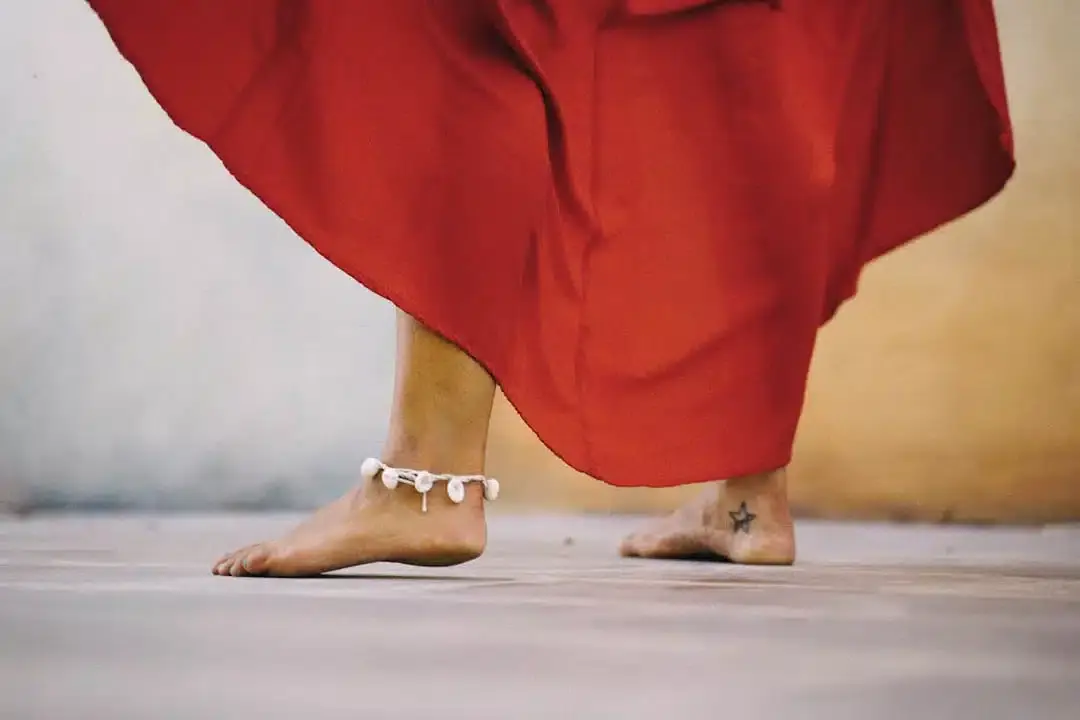For many people, an ankle bracelet is a simple, beautiful detail—a touch of femininity that brings to mind summer, warm sand, and barefoot walks along the beach. But what if we told you that behind this modest accessory lies a millennia-old story, filled with mystique, spirituality, and even... protection against evil curses? Few are aware of this, but this discreet piece of jewelry has endured across time and continents, revealing much more about those who wear it.

From Ancient Egypt to Indian Temples: How the Anklet Tells a Story
Let's travel back in time to the banks of the Nile during the age of the pharaohs. Back then, the anklet was far more than a stylish accessory. It was a symbol of status, reflecting wealth and nobility. Women of the upper classes adorned their ankles with finely crafted gold, while those of lesser means settled for leather or copper versions. Yet beyond their appearance, these anklets served as amulets believed to provide protection against evil spirits—much like the lucky charms our grandmothers might tuck under their pillows to ward off nightmares.
In India, the payal—the traditional silver anklet—is even today a vital part of bridal attire. It's much more than a simple piece of jewelry; it's a social symbol, proudly worn by married women. And the subtle jingling of its bells? That signifies joy and brings prosperity into the home. In Indian culture, the sound is as sweet and familiar as the ringing of a church bell in a French village.
The Sacred Sound of Silver: Indian Anklets and Bridal Traditions
Move further east to India, where the payal—a traditional silver anklet—is deeply woven into societal and spiritual fabric even today. More than just an accessory, it is an essential part of a bride's attire, worn with pride by married women. The gentle chiming of the payal's tiny bells is said to usher happiness and prosperity into the home, creating an atmosphere of festive joy.
In Indian culture, the sound of these bells is instantly recognizable and cherished, as familiar as the tolling of church bells in a small European village. Over generations, anklets have become symbols of celebration, marital status, and auspicious beginnings. In some regions, different styles and metals can even signify marital status, making these small ornaments powerful communicators of personal identity.
A Subtle Statement Across Continents
The anklet's allure has transcended boundaries and epochs, making its mark in cultures as diverse as those of Africa, Southeast Asia, and the Mediterranean. Each culture has adapted its meaning: in some, anklets are believed to attract positive energy; in others, they're simply stylish embellishments or ways to highlight a dancer's graceful movements.
Even today, choosing to wear an anklet can be a subtle way of expressing one's individuality, spiritual beliefs, or connection to tradition—whether you are donning a sparkling gold chain, a string of multicolored beads, or a simple woven cord. For modern fashionistas, the anklet is still a charming nod to warm weather and feminine elegance, but the centuries of symbolism carried within it add layers of meaning to its gentle shimmer.
More Than a Summer Trend
It's easy to overlook the significance of such a slender piece of jewelry, but every anklet is a thread linking past to present, tradition to modernity. Whether worn for protection, spirituality, social status, or pure aesthetics, the anklet endures as a timeless accessory—with a hidden story on every foot.
Source: https://recepten.servi.tn/de-verborgen-betekenis-achter-het-dragen-van-een-armband-om-je-voet/



